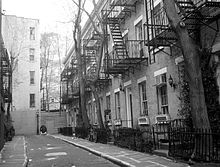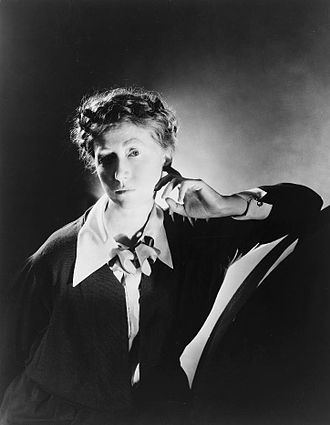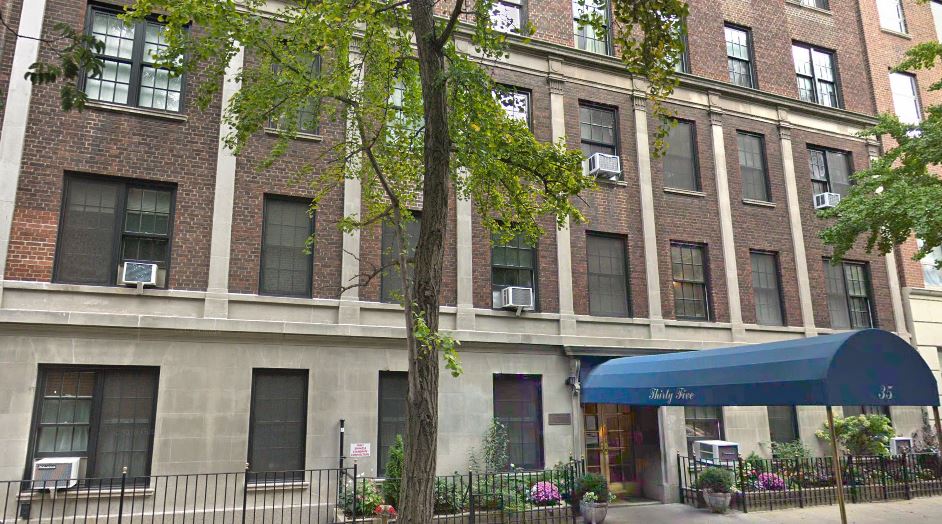Women Crush Wednesday: The Poets
April is National Poetry Month! Launched by the Academy of American Poets in 1996, the month of April marks a marvelous opportunity to celebrate the expressiveness, delight, and pure charm of poetry. National Poetry Month reminds us of the integral role of poets and poetry in our culture. It is only fitting to recognize several of the women of our neighborhoods who have contributed significantly to the canon of American poetry.
Djuna Barnes

The poet Djuna Barnes Djuna Barnes was born in Cornwall-on-Hudson, New York on June 12, 1892. She was an American novelist, poet, playwright, journalist, and visual artist, as well as an important figure in the Modernist movement. Her works include Nightwood, Ladies Almanack, and The Book of Repulsive Women. Barnes first came to Greenwich Village in 1915, becoming part of the growing ‘bohemian’ community. Barnes shared an apartment on Greenwich Avenue with Berenice Abbott, Kenneth Burke, and Malcom Cowley. She was involved with the Provincetown Players, was a member of the radical feminist Heterodoxy Club, and was openly bisexual, having many affairs with both men and women.

She moved into 5 Patchin Place in 1941, where she wrote ‘The Antiphon,’ which was only performed for the first time in 1962, in Stockholm. She became a recluse, living out the last forty-two years of her life at Patchin Place. E. E. Cummings, who lived at 4 Patchin Place, was known to check up on her by shouting through his window: ‘Are you still alive, Djuna?’
Emma Lazarus

In 1883 the Lazarus family moved to 18 West 10th Street, a beautiful Italianate-style home (pictured above) which is featured on Village Preservation’s Civil Rights and Social Justice Map. Lazarus was asked to write a poem about the Statue of Liberty. “The New Colossus” made Lazarus famous around the world with her lines “Give me your tired, your poor, Your huddled masses yearning to breathe free.” Lazarus, who’s been called a reclusive spinster, was a lifelong Villager, descended from the first Portuguese Jewish immigrants to the New York and North America. She began writing poetry when she was 11 years old, and as an adult she was broadly published, writing volumes of poetry and translations, and joining the world of writers, corresponding regularly with poets and writers of the time including Ralph Waldo Emerson and Henry James whose home was on Washington Place.
Marianne Moore

Marianne Moore is known as the Mother of Modernism. A native of Missouri, Moore studied at Bryn Mawr, graduating in 1909 with a B.A. in history, law, and politics. After her published poems began to gain attention from writers like T.S. Eliot and Ezra Pound, among others, she moved from Pennsylvania to New York City with her mother, Mary Warner Moore, in 1918. They originally settled in Greenwich Village at 14 St. Luke’s Place where she launched her New York literary career. In a letter to Ezra Pound dated January 9, 1919, she wrote, “I like New York, the little quiet part of it in which my mother and I live. I like to see the tops of the masts from our door and to go to the wharf and look at the craft on the river.”
Moore was widely recognized for her work; among her many honors were the Bollingen prize, the National Book Award, and the Pulitzer Prize. She wrote with the freedom characteristic of the other modernist poets, often incorporating quotes from other sources into the text, yet her use of language was always extraordinarily condensed and precise, capable of suggesting a variety of ideas and associations within a single, compact image.
She ultimately settled living on the 7th floor of the neo-Classical apartment building at 35 West 9th Street from 1966 until her death in 1972.

Patti Smith

Patti Smith was born in Chicago, raised in South Jersey, and moved to New York City in 1967. Her extensive achievements as a performer, an author, and a recording and visual artist are acknowledged worldwide.
While Smith is a multifaceted, multi-discipline artist, she choose performance poetry as her favored artistic medium. She gave her first public reading on February 10, 1971, at St. Mark’s Church-In-The-Bowery. Her long-time friend Lenny Kaye accompanied her on electric guitar. With that reading, Smith began to fuse her love of poetry with rock-n-roll, and essentially launched her career as a performer. Some of the work she read that night would become the songs on her first album, Horses. The pair read/played as part of the legendary Poetry Project at the church, founded in 1966 and still going strong. You can listen to a recording of that historic reading here.
Edna St. Vincent Millay

Edna St. Vincent Millay was a prolific writer from a very early age and won several poetry prizes from St. Nicholas, a children’s literary magazine of the time. In high school, she wrote and starred in school plays and edited the school literary magazine.
At the suggestion of her mother, she entered her long poem “Renascence” into a poetry contest at the age of 20. The poem, consisting of 107 rhyming couplets, describes a life-altering experience of spiritual awakening while standing on the top of Mt. Battle in Camden, ME. “Renascence” did not ultimately win that poetry prize, but was it published in the journal The Lyric Year and was widely considered the best of the collection. Her eventual award of fourth place in the contest caused a scandal. The first-place winner, Orrick Johns, admitted that he felt “Renascence” was the best poem of the collection, and stated that “the award was as much an embarrassment to me as a triumph.” A second-prize winner offered Millay his $250 prize money, a very substantial sum of money for the time. But the scandal of losing to the men in the contest brought Millay much attention, and “Renascence” was widely distributed and even taught to school children as an exemplar of American poetry.
According to the Millay Society, “In the immediate post-World War I era, Edna St. Vincent Millay emerged as a major figure in the cultural life of Greenwich Village, when the Village served as an incubator of every important American literary, artistic, and political movement of the period. As part of this milieu, Millay’s work and life came to represent the modern, liberated woman of the Jazz age, free of the restrictions of the past…”

St. Vincent Millay lived in “the narrowest house in the Village,” 75 1/2 Bedford Street. Her house, a three-story building with an unusual stepped gable, is reminiscent of the Dutch tradition. She lived here from 1923 to 1924. You can view historic photos of the house from our historic image archive here.
